Proinflammatory cytokine secretion is suppressed by TMEM16A or CFTR channel activity in human cystic fibrosis bronchial epithelia
- PMID: 22973054
- PMCID: PMC3484098
- DOI: 10.1091/mbc.E12-06-0424
Proinflammatory cytokine secretion is suppressed by TMEM16A or CFTR channel activity in human cystic fibrosis bronchial epithelia
Abstract
Cystic fibrosis (CF) is caused by the functional expression defect of the CF transmembrane conductance regulator (CFTR) chloride channel at the apical plasma membrane. Impaired bacterial clearance and hyperactive innate immune response are hallmarks of the CF lung disease, yet the existence of and mechanism accounting for the innate immune defect that occurs before infection remain controversial. Inducible expression of either CFTR or the calcium-activated chloride channel TMEM16A attenuated the proinflammatory cytokines interleukin-6 (IL-6), IL-8, and CXCL1/2 in two human respiratory epithelial models under air-liquid but not liquid-liquid interface culture. Expression of wild-type but not the inactive G551D-CFTR indicates that secretion of the chemoattractant IL-8 is inversely proportional to CFTR channel activity in cftr(∆F508/∆F508) immortalized and primary human bronchial epithelia. Similarly, direct but not P2Y receptor-mediated activation of TMEM16A attenuates IL-8 secretion in respiratory epithelia. Thus augmented proinflammatory cytokine secretion caused by defective anion transport at the apical membrane may contribute to the excessive and persistent lung inflammation in CF and perhaps in other respiratory diseases associated with documented down-regulation of CFTR (e.g., chronic obstructive pulmonary disease). Direct pharmacological activation of TMEM16A offers a potential therapeutic strategy to reduce the inflammation of CF airway epithelia.
Figures
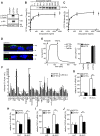
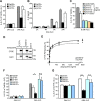
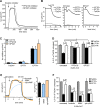
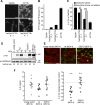

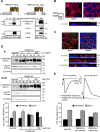
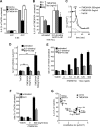
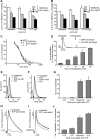

Similar articles
-
Expression and function of Anoctamin 1/TMEM16A calcium-activated chloride channels in airways of in vivo mouse models for cystic fibrosis research.Pflugers Arch. 2018 Sep;470(9):1335-1348. doi: 10.1007/s00424-018-2160-x. Epub 2018 Jun 2. Pflugers Arch. 2018. PMID: 29860639
-
Anoctamin 1 dysregulation alters bronchial epithelial repair in cystic fibrosis.Biochim Biophys Acta. 2013 Dec;1832(12):2340-51. doi: 10.1016/j.bbadis.2013.09.012. Epub 2013 Sep 27. Biochim Biophys Acta. 2013. PMID: 24080196
-
TMEM16A Mediates Mucus Production in Human Airway Epithelial Cells.Am J Respir Cell Mol Biol. 2021 Jan;64(1):50-58. doi: 10.1165/rcmb.2019-0442OC. Am J Respir Cell Mol Biol. 2021. PMID: 33026825
-
The TMEM16A chloride channel as an alternative therapeutic target in cystic fibrosis.Int J Biochem Cell Biol. 2014 Jul;52:73-6. doi: 10.1016/j.biocel.2014.03.022. Epub 2014 Apr 1. Int J Biochem Cell Biol. 2014. PMID: 24704530 Review.
-
Pharmacotherapy of the ion transport defect in cystic fibrosis: role of purinergic receptor agonists and other potential therapeutics.Am J Respir Med. 2003;2(4):299-309. doi: 10.1007/BF03256658. Am J Respir Med. 2003. PMID: 14719996 Review.
Cited by
-
Identification and Characterization of Novel CFTR Potentiators.Front Pharmacol. 2018 Oct 26;9:1221. doi: 10.3389/fphar.2018.01221. eCollection 2018. Front Pharmacol. 2018. PMID: 30416447 Free PMC article.
-
Mutation-specific dual potentiators maximize rescue of CFTR gating mutants.J Cyst Fibros. 2020 Mar;19(2):236-244. doi: 10.1016/j.jcf.2019.10.011. Epub 2019 Oct 31. J Cyst Fibros. 2020. PMID: 31678009 Free PMC article.
-
Structural and Biophysical Analysis of the CLCA1 VWA Domain Suggests Mode of TMEM16A Engagement.Cell Rep. 2020 Jan 28;30(4):1141-1151.e3. doi: 10.1016/j.celrep.2019.12.059. Epub 2020 Jan 28. Cell Rep. 2020. PMID: 31995732 Free PMC article.
-
Mapping of long-range INS promoter interactions reveals a role for calcium-activated chloride channel ANO1 in insulin secretion.Proc Natl Acad Sci U S A. 2014 Nov 25;111(47):16760-5. doi: 10.1073/pnas.1419240111. Epub 2014 Nov 10. Proc Natl Acad Sci U S A. 2014. PMID: 25385647 Free PMC article.
-
Creation and characterization of an airway epithelial cell line for stable expression of CFTR variants.J Cyst Fibros. 2016 May;15(3):285-94. doi: 10.1016/j.jcf.2015.11.010. Epub 2015 Dec 13. J Cyst Fibros. 2016. PMID: 26694805 Free PMC article.
References
-
- Accurso FJ, Moss RB, Wilmott RW, Anbar RD, Schaberg AE, Durham TA, Ramsey BW. Denufosol tetrasodium in patients with cystic fibrosis and normal to mildly impaired lung function. Am J Respir Crit Care Med. 2011;183:627–634. - PubMed
-
- Adcock IM, Tsaprouni L, Bhavsar P, Ito K. Epigenetic regulation of airway inflammation. Curr Opin Immunol. 2007;19:694–700. - PubMed
-
- Anderson MP, Welsh MJ. Regulation by ATP and ADP of CFTR chloride channels that contain mutant nucleotide-binding domains. Science. 1992;257:1701–1704. - PubMed
-
- Armstrong DS, Hook SM, Jamsen KM, Nixon GM, Carzino R, Carlin JB, Robertson CF, Grimwood K. Lower airway inflammation in infants with cystic fibrosis detected by newborn screening. Pediatr Pulmonol. 2005;40:500–510. - PubMed
Publication types
MeSH terms
Substances
Grants and funding
LinkOut - more resources
Full Text Sources
Other Literature Sources
Medical

